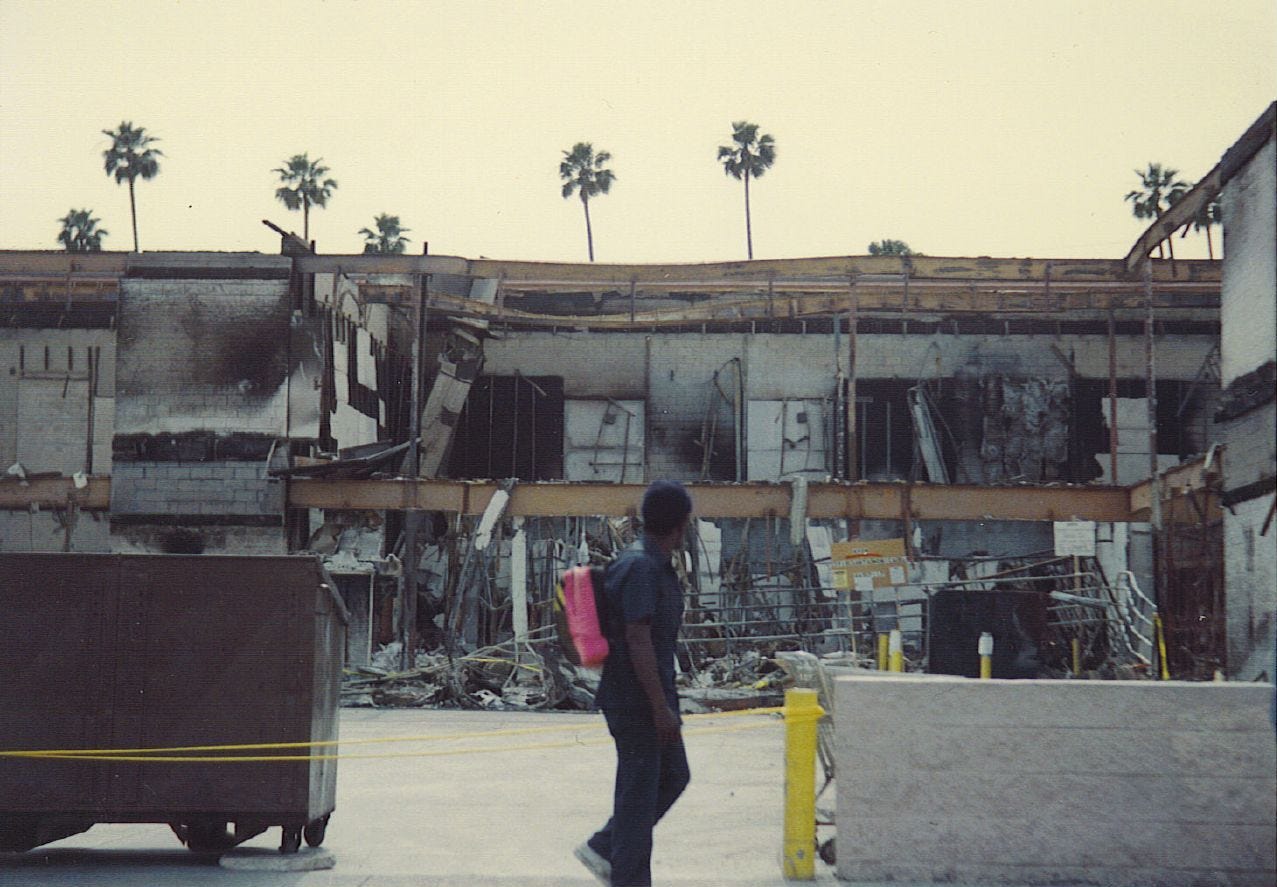Aftermath of the 1992 Los Angeles riots. Photograph by Mick Taylor, Creative Commons.
Editor’s note: What follows is a guest post from Tom Ricks. Tim Noah also wrote today (in The New Republic) about Trump’s ill-advised deployment of the National Guard. To read that, click here. But what follows is by Ricks, not Noah.
This month I have a new novel out in which a state governor deploys the National Guard to protect protestors, which angers the president, a vindictive reactionary. He in turn federalizes the governor’s National Guard—just as Trump did with the California Guard over the weekend.
As it happens, deploying the Guard is harder than it looks. But don’t take it from me. Here are three lessons from a report by a California National Guard officer who was involved in the security response to the 1992 riots that followed the Rodney King verdict:
Don’t assume competence on the part of your civilian counterparts. In 1992, the officer notes, the mayor of Los Angeles and the city’s chief of police weren’t talking to each other. On top of that, the police chief and the county sheriff hadn’t spoken for over a year.
Be careful with your language. When the LA police told a squad of Marines to “cover them,” that meant, in their world, to watch their backs while they went into a house. But to the Marines, it meant to lay down covering fire. So in response they shot about 200 bullets into the house.
Cultural interpretations are important. The National Guard found that when they detained Salvadorans, the detainees freaked out. They learned this was because to people from El Salvador, “National Guard” meant death squads. The Army, a learning organization, quickly learned to turn over these detainees to the police, which calmed things down quickly.
How will the LA situation unfold? I am scared by it, because Donald Trump is acting provocatively, as if he wants violence, chaos and “American carnage.” If I were Governor Newsom of California, I’d be tempted to deploy the Highway Patrol, the largest state police organization in the country, to separate the protestors from Trump’s federalized Guard.
I’d also keep an eye on whether Guard soldiers balk at this domestic duty. This isn’t like patrolling the Mexican border. The people the soldiers are looking at are going to look and speak like their friends and neighbors in Manhattan Beach and Fullerton. They likely will face some tough questions about which side they are on. Not all will answer the same way.
The essential thing is for the protestors to show discipline and restraint. That way, Trump doesn’t have an excuse to go wild.





